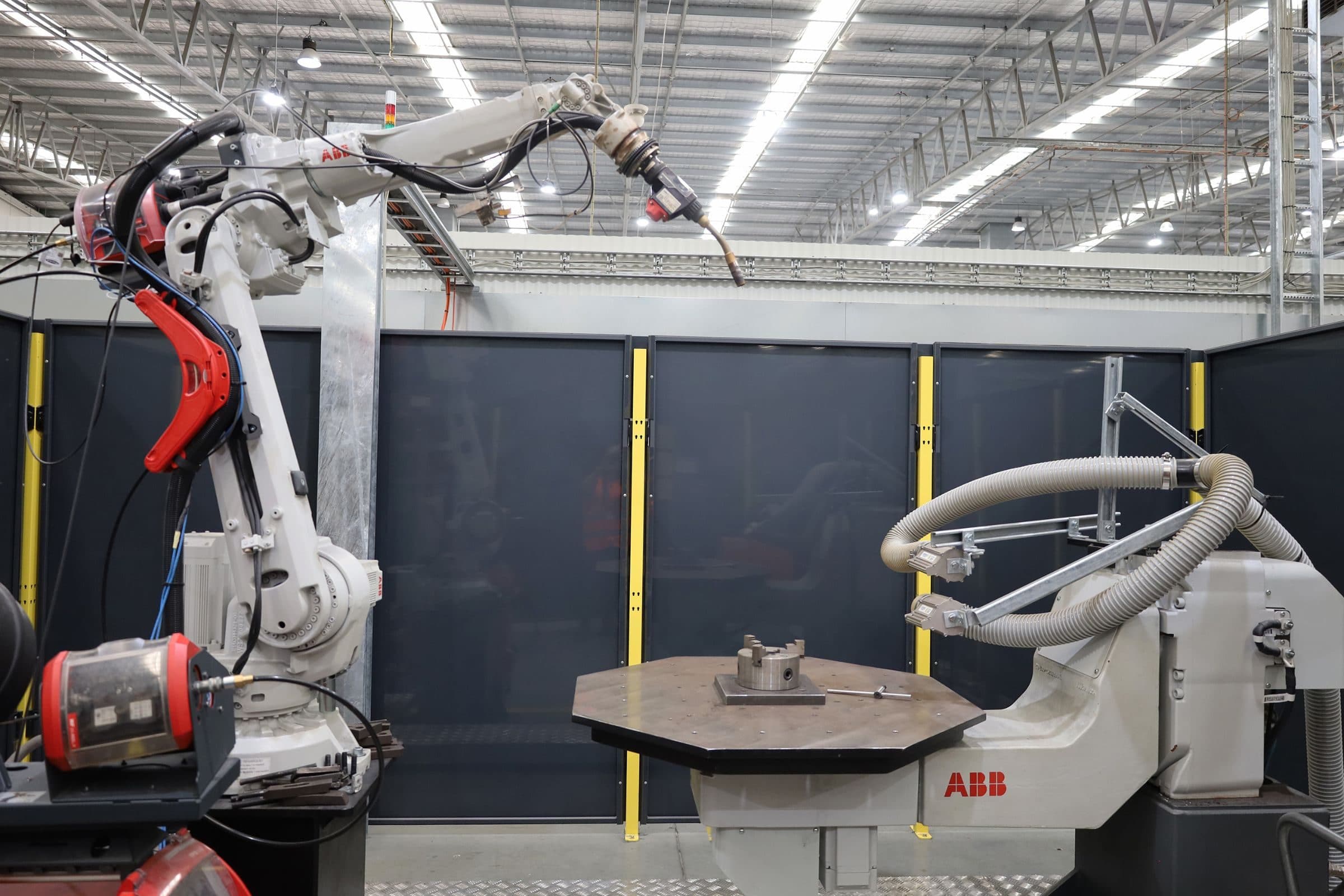Aussie company AML3D Limited (ASX:AL3) has received an order from The Boeing Company to 3D print a large-scale tool for the aerospace manufacturer. This is AL3D’s first order from Boeing, giving it an entry point into the lucrative world of aerospace manufacturing.
Using its Wire Additive Manufacturing (WAM) process, a wire arc welding system attached to an industrial robotic arm, AML3D will 3D print a mandrel tool from Invar-36. This material is a nickel-iron alloy made up of 36 percent nickel and capable of withstanding cryogenic temperatures to about 500°F while remaining tough and without expanding greatly. Given the relatively limited number of metals available for 3D printing with powder bed fusion or blown powder directed energy deposition, a process like WAM would be ideal for this unique alloy.
The mandrel tool will way close to 150kg and will be first examined and tested for its mechanical properties, structural and vacuum integrity, and the ability of AM3D to fabricate items to Boeing specifications. While Boeing certainly uses 3D printing in-house, it relies on third-party manufacturers in its supply chain to a great extent. This $50,000-part signifies an important step for the Australian firm, as it opens AML3D to other work with the aerospace giant.
“AML3D is very excited to begin working with Boeing, one of the world’s largest aerospace companies. This purchase contract will provide the Company with a key opportunity to showcase its ability to produce parts on time and to specification with a high-quality customer as the world adapts to 3D printed solutions in addition to traditional manufacturing,” AML3D Managing Director Mr Andrew Sales said.
AML3D has already demonstrated the capability of its technology for producing parts for the maritime sector, with the approval of DNV, the world’s largest classification society. It is also having its technology evaluated by the Australian Navy and BAE Systems Australia subsidiary ASC Shipbuilding. Additionally, AML3D is in the process of 3D printing an impeller for Thyssenkrupp and Wilhelmsen, the leaders in maritime 3D printing. In other words, the Australian company has begun to establish itself in the sea. With approval from Boeing, it could find its parts used for applications in the sky, as well.
Though we don’t now exactly what type of mandrel tool AML3D will be producing, we can supposed that it might be a type of workpiece against which metal might be formed. That would explain the unique alloy from which its made, necessary to withstand extreme temperatures while crafting the part. Much more than that, we don’t really know. Regardless, AML3D seems to have found itself in the company of some profitable military outfits, which means that we’ll likely only see more of it in the near future.
Subscribe to Our Email Newsletter
Stay up-to-date on all the latest news from the 3D printing industry and receive information and offers from third party vendors.
You May Also Like
Precision at the Microscale: UK Researchers Advance Medical Devices with BMF’s 3D Printing Tech
University of Nottingham researchers are using Boston Micro Fabrication‘s (BMF) 3D printing technology to develop medical devices that improve compatibility with human tissue. Funded by a UK grant, this project...
3D Printing Webinar and Event Roundup: April 21, 2024
It’s another busy week of webinars and events, starting with Hannover Messe in Germany and continuing with Metalcasting Congress, Chinaplas, TechBlick’s Innovation Festival, and more. Stratasys continues its advanced training...
3D Printing Webinar and Event Roundup: March 17, 2024
It’s another busy week of webinars and events, including SALMED 2024 and AM Forum in Berlin. Stratasys continues its in-person training and is offering two webinars, ASTM is holding a...
3D Printed Micro Antenna is 15% Smaller and 6X Lighter
Horizon Microtechnologies has achieved success in creating a high-frequency D-Band horn antenna through micro 3D printing. However, this achievement did not rely solely on 3D printing; it involved a combination...






























